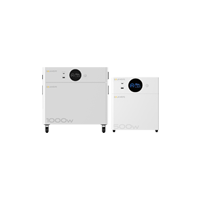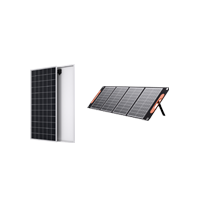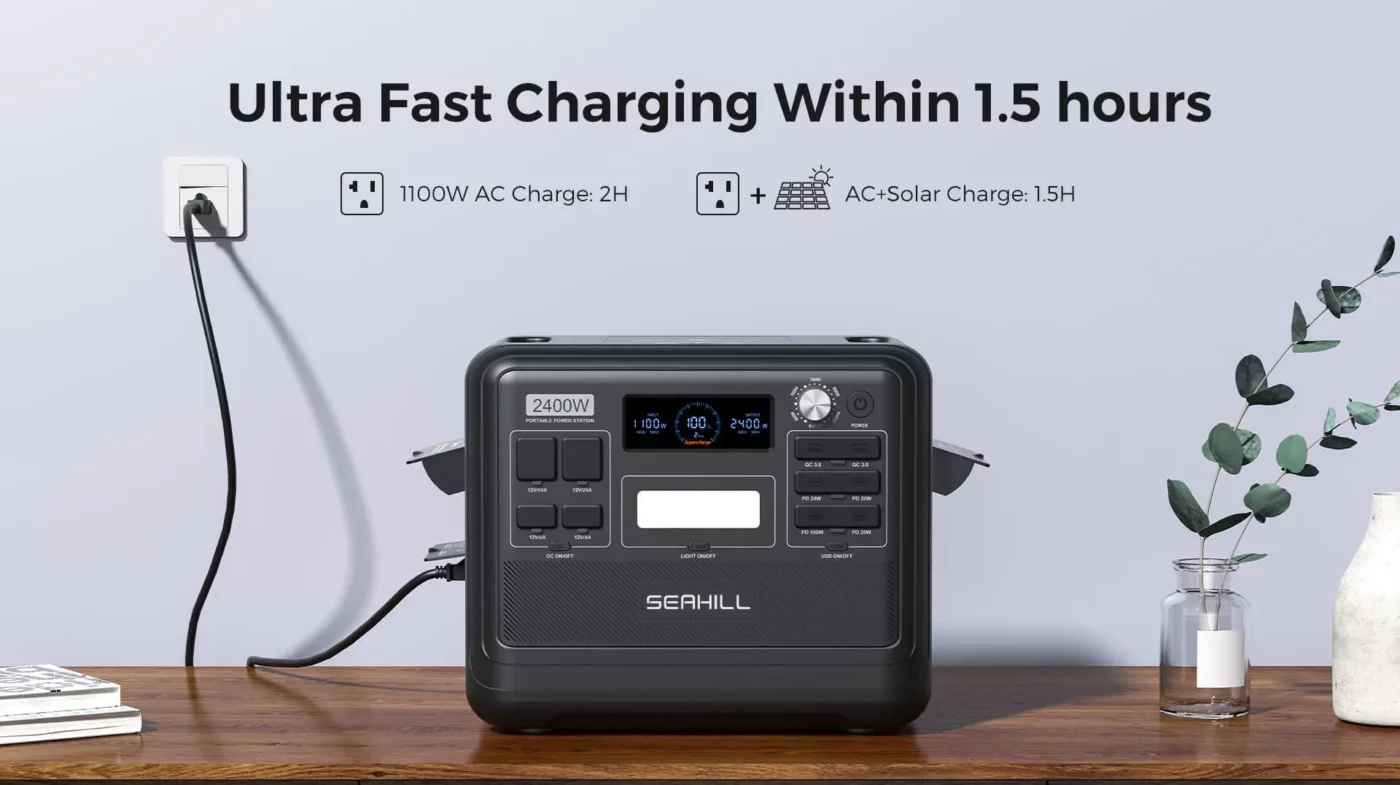Products Related
How to Charge a Portable Power Station
Portable power stations are an excellent solution for powering small devices and appliances when you’re on the go. But like all electronic devices, they need to be charged regularly to maintain their functionality. There are three ways to charge a portable power station: AC only, solar/DC only, or AC+DC at the same time. In this article, we’ll explore the different ways to charge a portable power station and provide some helpful tips to ensure that you get the most out of your device.
Table of Contents
- Introduction
- Charging via AC power(Grid Power)
- Charging via solar/DC power (Solar Panels/DC power)
- Charging via AC+DC power
- Choosing the right cables
- Conclusion
- FAQs
Introduction
Before we dive into the different methods of charging a portable power station, it’s important to understand how these devices work. A portable power station is essentially a rechargeable battery pack that stores energy for later use. When you plug a device into the power station, it draws power from the battery, allowing you to use it without being connected to an electrical outlet.
However, in order to recharge the battery, you need to connect it to a power source. That’s where the different charging methods come in.
Charging via AC Power
The most straightforward way to charge a portable power station is to use AC power. To do this, simply connect the power station to a socket using the power cord. Once connected, the power station will start charging automatically.
The charging time will depend on the input power and the capacity of the power station. For example, the Solahope M2400 portable power station can be fully charged only by AC within 2 hours. However, there will be some losses in efficiency when charging with AC power. If you’re charging with an input of 1100W, the power station may only receive around 935W, resulting in an efficiency of approximately 85%.
To calculate the charging time, you can use the following formula:
Charging time = capacity / (input power * efficiency)
For example, if you have a 2048Wh portable power station and you’re charging it with an input power of 1100W, the charging time would be:
Charging time = 2048Wh / (1100W * 0.85) = 2.19 hours
Charging via Solar Panels
Another way to charge a portable power station is to use solar or DC power. The maximum solar input for the M2400 power station is 500W, and you can connect the power station to solar panels using the included solar charging cable.
If you’re using portable solar panels, you can choose to use 200w portable solar panels. However, keep in mind that the charging time will be longer than when using AC power. For example, if you’re using 200W solar panels to charge a 2048Wh power station, it would take approximately 12 hours to fully charge.
And you can also choose 400w solar power or 500w solar power, that will charge faster.
Charging with DC Power
If you’re out camping or traveling in your car, you can still charge your portable power station by using DC power from your car’s cigarette lighter socket.
To use this method, you’ll need to connect the power station to the car’s power source using the car charging cable. Once connected, the power station will start charging immediately.
It’s important to note that the car’s cigarette lighter socket usually has a maximum output of 150 watts. Therefore, the charging time may vary depending on the input wattage and the efficiency of the power station. For example, if you have an input of 150 watts, the power station may only receive around 128 watts, resulting in an efficiency of approximately 85%.
To calculate the charging time using this method, you can use the same formula we used earlier:
2048/(150*0.85)=16 hours.
Charging via AC+Solar/DC Power
The third way to charge a portable power station is to use both AC and DC power at the same time. This can be useful if you have access to both power sources and want to charge your device as quickly as possible.
To do this, simply connect the power station to both an AC outlet and solar panels or a car’s cigarette lighter socket using the appropriate cables. For example, if you’re using 1100W AC power and 200W solar panels to charge a 2048Wh power station, the charging time would be:
Charging time = 2048Wh / (1300W * 0.85) = 1.85 hours
What Cables Are Needed to Charge a Portable Power Station?
To charge a portable power station, you’ll need three different cables: the power cord, solar charging cable, and car charging cable. Fortunately, all three cables are usually included in the package of a portable power station, so you don’t need to purchase them separately.
The power cord is used to charge the power station via AC power, while the solar charging cable is used to connect the power station to solar panels. Lastly, the car charging cable is used to charge the power station using DC power from a car’s cigarette lighter socket.
Conclusion
In conclusion, charging a portable power station is an easy and straightforward process. You can choose to charge it using AC power, solar power, DC power from a car’s cigarette lighter socket, or a combination of AC and solar power.
When charging your portable power station, it’s essential to consider the input wattage, efficiency, and charging time. By understanding these factors, you can ensure that your power station is fully charged and ready to use when you need it.
More about portable power station:
What appliance can a portable power station power run?




